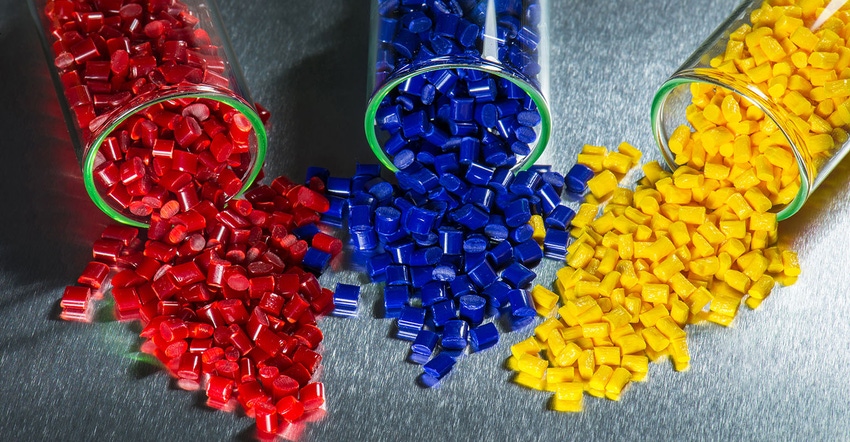Resin Price Report: Spot Resin Trading Picks Up Pace
Increased activity did not affect resin pricing, however, which held steady to firm last week.
February 8, 2023

Spot resin trading was generally elevated at the PlasticsExchange last week. Completed volumes were the highest so far this year, but business was still below average compared with recent quarters and year-over-year monthly results, reports the Chicago-based resin clearinghouse in its Market Update.
Prime polyethylene (PE) prices rose $0.03/lb in early January and polypropylene (PP) had advanced $0.08/lb, but the demand surge as January ended did little to lift prices further, as both commodity resin groups held steady to firm last week.
For a change of pace, PP was the major mover compared with PE, both of which continued to see very limited fresh availability, especially for Prime. Most producers sold out of their spot export offerings in early January, Latin American demand continued on, and early February orders reportedly have been strong, as Asian traders returned from Lunar New Year with buy orders in hand.
The lack of spot offerings, both domestic and export, shows that resin producers likely maintained their production discipline throughout January. We will know in the coming days the extent to which reactors remained throttled back during the month, writes the PlasticsExchange.
PE contract increase on the table
January resin contracts have not fully settled: Some have called for PE to roll flat (although the PlasticsExchange said it still feels that a $0.03/lb increase is well warranted). In addition, there are as much as $0.06/lb PE increases on the table for February. If robust export demand returns and production remains significantly reduced, there is a chance for at least a piece of the February increases to take hold, according to the PlasticsExchange. Some have called for January PP contracts to settle up only $0.06/lb, which would be on the light side given the run-up in polymer-grade propylene (PGP) prices and margin contraction in December. If PP producers concede to another margin decrease in January, the expectation is for them to recover it in February, as they have as much as a $0.06/lb increase on the table in addition to the change in PGP contracts, which are already pointing higher. PE activity picked up this past week: While completed volumes were not overly robust, deals were well spread across all major high density (HD), low density (LD) and linear-low-density (LLD) PE grades.
PE resin stockpiles at 16-month low
Trading last week was mostly done in single or multiple truckloads along with some notable export sales. HDPE saw the most completed transactions, as force majeure conditions remain in place affecting these grades. Upstream PE inventories have declined by more than one billion pounds since July, stockpiles entered 2023 at a 16-month low, and the tighter supplies were noticeable. There was essentially no domestic prime producer spot availability last month. The only prime PE resin to reach the PlasticsExchange platform during January came from its own market-making inventories, resellers’ stocks, or from pre-forecasted railcars. January domestic demand was almost equally absent, which offset the lack of supply. January PE contracts are not fully settled; at a minimum they will be flat, even though $0.03/lb probably will stick. Either way, producers will dig in for a February increase.
It was a better week for PP trading with a relatively large volume of material changing hands. Benchmark prices for both homo- and co-polymer PP finished flat for the second week in a row, having already rallied $0.08/lb during the first part of January. Demand was lackluster most of the month, as processors who could afford to push off their PP purchases resisted the rapidly rising prices driven by soaring feedstock costs. At one point, they had jumped nearly $0.20/lb before subsiding. However, some well-priced end-of-month deals were too compelling to pass by and buyers came in to scoop them up. Of completed dealings at the PlasticsExchange desk, Prime homo-polymer (Ho) PP led the way, followed by good off-grade HoPP railcars and some Prime CoPP truckloads scattered in for good measure.
Tighter supplies take hold
PP producers have throttled back reactor rates significantly since September while ramping up exports to help reduce the inventory overhang and rebalance the supply/demand dynamic. The tighter supplies have been taking hold — no Prime railcars were seen offered by producers into the spot market during January. However, Prime cars could be ordered for new production since plenty of capacity has been offline.
There was a relatively steady flow of off-grade railcars at prices well discounted to Prime, and plenty of start-up and transitional material in the wake of weather-related production disruptions. As the month wore on, the material quality generally improved. Domestic demand remained subdued for longer than the PlasticsExchange expected, as processors continued to de-stock their resin and finished goods inventories.
January PP contracts will finally settle with a steep but relatively benign increase compared to the mid-month outlook when monomer was still spiraling higher. Spot PGP prices began to rise again this past week. If they continue to head north, it will be interesting to see how long processors can avoid placing their higher volume orders or if restocking will finally begin to ensue, said the PlasticsExchange.
Read the full Market Update, including news about PGP pricing and energy futures, on the PlasticsExchange website.
You May Also Like


